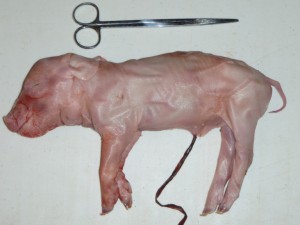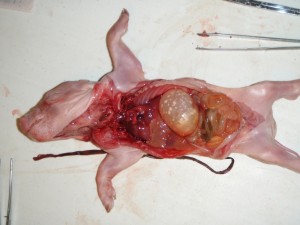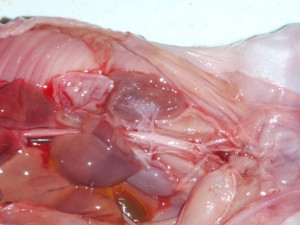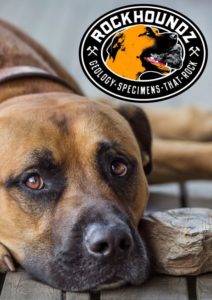
This little piggy is the latest and greatest in whole animal dissection specimens. They are either stillborn from large litters or smothered by the sow in the stall and come from a farm breeding pigs for meat. They are usually disposed of as farm waste but we are collecting them and diverting them from the waste stream for dissection. They are less smelly, cheaper, closer to human anatomy than a rat and aren’t being bred just to be euthanased for science, so each piglet used in the classroom represents a rat that hasn’t had to be put down.
Each piglet typically weighs 600-800g. The piglets are collected and frozen without any chemical preservatives which reduces your chemical exposure in the lab as well as eliminating a source of exposure to the kids in the classroom. It also makes the piglets safe to dispose of in landfill with other normal waste.

As they generally have not yet fed or only briefly suckled, the intestinal tract is pretty clean and there is little smell to the specimen. Each organ can easily be identified and removed for further exploration.

The detail in the circulatory system of the piglets is particularly amazing. You can see in the photo above the veins and arteries of the urogenital system clearly visible. Once the overlying organs were taken out, the spine was visible and a section could be removed to allow the spinal cord to be seen.
There is a lot more that can be explored with these specimens and we will be spending a lot of time working on them so we can develop some really good resources to allow you to get more bang for your buck. In the meantime keep an eye out for workshop announcements that will give you the chance to get your hands on one. We are expecting to be able to bring them to you at ConQEST 2012, if not before.
See you there,
![]()


